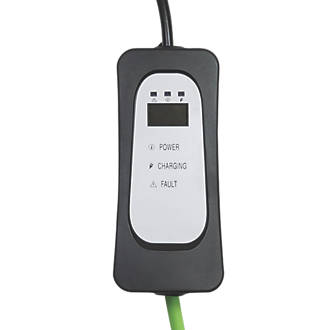Hi All,
I'm in the process of buying a PHEV car, but could do with some advice over the charging side.
I've been looking at the mainstream charging points from the major suppliers who all quote about £500-600 to install a 7Kw charger (plus all the additions you know will be needed when they come and do their tut'ing), but as its only a PHEV with a 14KWh battery, charging from a 13A socket would only take 6h which is fine.
Plus the fact that my overnight rate would only be 10p/Kwh cheaper, the charging point would take about 15 years to even break even due to the decreased electricity cost (4h of charging at cheaper rate and 2 hours at normal rate) by which time I'm sure it'll be obsolete or knackered.
So … for now at least, my plan is to have a 13A socket installed outside, which I can plug the car into using a 2.3Kw mode 2 cable. The car can be setup to only charge during the cheaper hours.
However, how do I stop some unwieldly neighbour coming and stealing my leccy?
I've searched for lockable boxes but found nowt that looks suitable, does such a thing even exist?
The car has a 'lock' for the cable on it's end, but nothing for the other!
I'm in the process of buying a PHEV car, but could do with some advice over the charging side.
I've been looking at the mainstream charging points from the major suppliers who all quote about £500-600 to install a 7Kw charger (plus all the additions you know will be needed when they come and do their tut'ing), but as its only a PHEV with a 14KWh battery, charging from a 13A socket would only take 6h which is fine.
Plus the fact that my overnight rate would only be 10p/Kwh cheaper, the charging point would take about 15 years to even break even due to the decreased electricity cost (4h of charging at cheaper rate and 2 hours at normal rate) by which time I'm sure it'll be obsolete or knackered.
So … for now at least, my plan is to have a 13A socket installed outside, which I can plug the car into using a 2.3Kw mode 2 cable. The car can be setup to only charge during the cheaper hours.
However, how do I stop some unwieldly neighbour coming and stealing my leccy?
I've searched for lockable boxes but found nowt that looks suitable, does such a thing even exist?
The car has a 'lock' for the cable on it's end, but nothing for the other!







